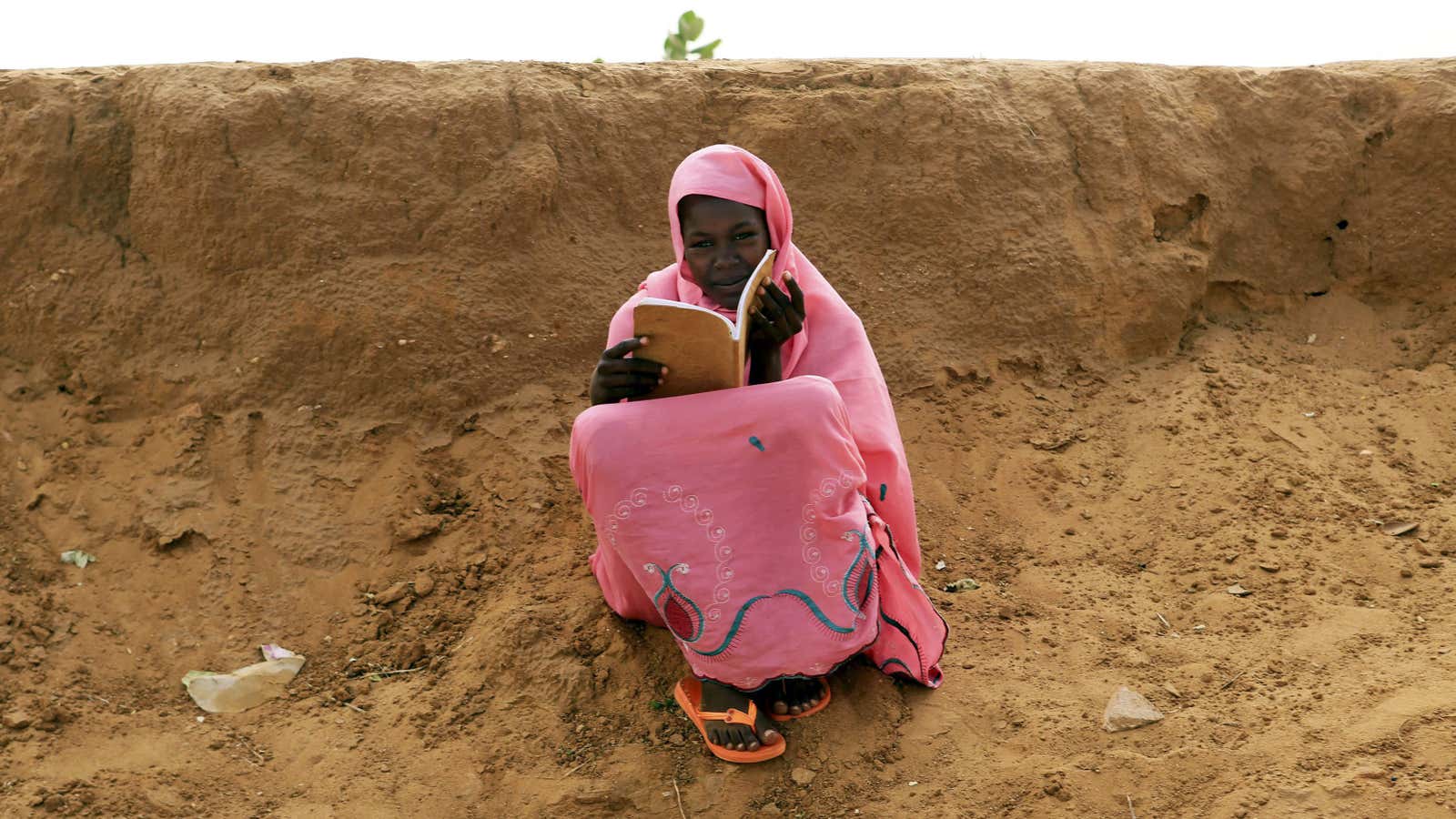In many countries across sub-Saharan Africa, Muslim and Christian communities coexist side by side. But a huge gap exists between them when it comes to educational attainment, with African Christians more than twice as likely to have formal schooling than their Muslim counterparts, a Pew Research Center study shows.
The study, which looked at the number of years of schooling both groups received based on age and gender, showed that 65% of Muslims in sub-Saharan Africa had no formal education—the highest anywhere in the world. By contrast, 30% of Christians in the region had not enrolled or completed any form or level of schooling.
The Pew findings drew on census and survey data from 151 countries—36 from sub-Saharan Africa—and analyzed educational levels among believers of Christianity, Islam, Hinduism, Buddhism, Judaism, and the religiously unaffiliated. In 18 out of 27 countries with substantial Christian and Muslim populations in the region, Muslims trailed Christians by at least 10 percentage points. Nine countries had education data on Muslims only (Comoros, Gambia, Niger and Somalia) or Christians only (Cape Verde, Lesotho, Namibia, Swaziland, and Zimbabwe).
Christianity and Islam are the two dominant religions in sub-Saharan Africa, together accounting for more than 93% of the population. Given the dropping child mortality and high fertility rates in the region, much of the worldwide growth of Islam and Christianity is expected to take place there in the coming decades. By 2050, for instance, four out of every 10 Christians in the world will live in sub-Saharan Africa.
One of the factors behind the gulf in education levels is colonial and missionary education efforts. During the colonial era, Christian missionaries were central agents in the development of education and curriculum systems, mostly rooted in evangelicalism and scripture. Muslim families never sent their children to these schools, fearing their conversion—a decision that had a profound impact on younger generations.
“In many cases, Muslims had already established their own Islamic education system, and sometimes political systems as well,” said Melina Platas, an assistant professor at New York University Abu Dhabi. “In these areas, colonial authorities often limited educational investments, especially by Christians, either to avoid conflict or because of perceived low demand for Western-style education.”
In Nigeria for example, British colonialists in the early 20th century discouraged the development (pdf, p. 339) of missionary schools in northern parts of the country populated by Muslims. As a result, even though both religions each make up about half the population, 61% of Muslim adults now do not have formal education, compared with just 26% of Christians. In sub-Saharan Africa, Muslims are also less likely to be educated than Christians in Senegal, Tanzania, Kenya and Ghana—which similarly had large Muslims communities.
Educational attainment is of course also dependent on the income and resource levels of each country, and how much conflict each has experienced. For instance, Muslims in Europe have had more years of schooling than Muslims in the Middle East. In Malawi, acute poverty in Muslim-majority areas has contributed to the lack of school enrollment. Early marriage and the lack of formal employment opportunities have also kept Muslim women from school. Things for Muslim men are no better: 57% in sub-Saharan Africa have no formal schooling, compared with 36% of Christian women and 22% of Christian men.
These gaps don’t mean that there’s something inherent in Islam that contradicts education, Platas says. The policies of extremist groups like Boko Haram in Nigeria, who have kidnapped schoolgirls and called ‘Western’ education forbidden, are outliers.
Overall, achievements among the younger population are growing at a pace better than those from older generations, with those with one or more years of primary schooling doubling from 21% to 43%. The younger generation of Muslim women is also making educational gains, with those with no formal schooling dropping from 87% among the 55-74 year-olds to 65% among those between the ages 25-34. In countries where Muslims are a minority, like Burundi, Rwanda and South Africa, they have also attained more formal education than Christians in relation to their population size.
